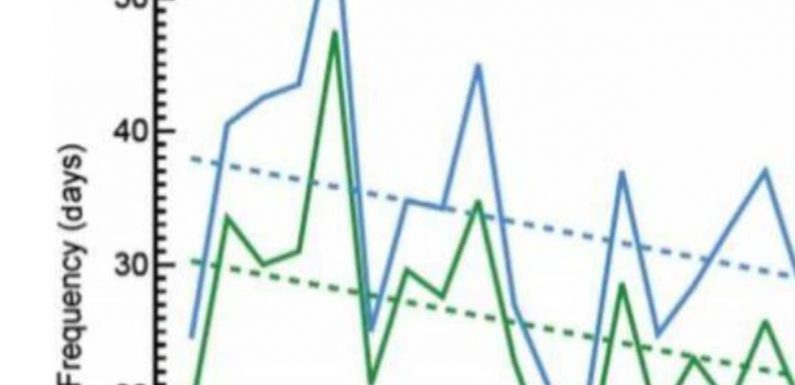
Australians, start waxing your skis. We’re due for some decent snowfalls this year.
After the COVID-induced fiasco that was last year’s snow season (Thredbo’s online ticketing disaster, fun-police bans on snow play and terrain parks) it’s about time skiers and boarders had some good news.
Fortunately, that’s exactly what long-term weather trends are giving us.
La Niña is over – and that’s great for snow
The Bureau of Meteorology (BOM) has declared the past year’s La Niña weather event officially over and the world entered a “neutral” pattern on the El Niño and the Southern Oscillation (ENSO) index at the end of March.
We know El Niño can spell disaster droughts and bushfires in Australia, while La Niña – as occurred over the recent summer – offers relief in more rain and cooler temperatures. But what does “neutral” mean for the Australian ski season?
According to historic snowfall depths, neutral is good – great even – for snow in the NSW and Victorian Alps.
RELATED: First look at the Aldi snow sale
Snowfall depth and frequency has changed a lot since 1988. Source: Snowy HydroSource:Supplied
RELATED: How Thredbo will look this year
In the words of BOM: “Historically, neutral years have had more consistent good snow depths than either El Niño or La Niña years.”
Of course, the BOM boffins love to curb our excitement with the disclaimer: “Australia’s snow season is highly variable and a single weather event can greatly change a season.”
However, a BOM spokesperson gave Escape this gold nugget: “Our climate drivers, like El Niño and La Niña, can give a guide of what the season may be like. Neutral conditions are expected over winter-spring and this tends to increase the likelihood of higher-than-normal snow depths.”
It’s looking to be a bumper season on the slopes this year.Source:Supplied
Neutral ENSO favours Aussie snow
The “Snowmageddon” of winter 2017, which saw 23 days of snow and a maximum base depth of 238cm at Perisher (according to historic snow depths tallied by OnTheSnow.com) was a neutral year. Those fortunate enough to ski in August 2017 know it was a season for the record books – involving three separate “Blizzard of Oz” storms that became storied legends on the slopes.
The following year of 2018 was also memorable: As the ENSO remained neutral, Perisher recorded more than 232cm at its peak base and 22 days of snowfall. A few years earlier, the original Snowmageddon of 2014 dropped a metre of snow in less than a week. That was another neutral year in which La Niña had ended just prior – setting 2014 up in a similar scenario to the one we are facing in 2021 as Australia emerges from La Niña.
There was a big difference between the 2015 El Nino year and the 2018 neutral year. Picture: Snowy HydroSource:Supplied
What conditions do we want to avoid?
In comparison, the worst snow years on record in Australia tend to line up with El Niño weather seasons.
The record-breaking 2015-2016 El Niño that broke warming records around the world, causing hurricanes in the North Pacific and a one-in-500-year drought in Ethiopia, spelled disaster for skiing in Australia. Perisher’s maximum base depth reached just under 150cm – a full metre less than 2018. The ski fields were decimated by rain for a week in July, and memes literally flooded the internet declaring skiing off, while whale-watching tours seemed more likely to succeed.
Those dirty words
Global warming. Without getting political, anyone who skis or spends a fair portion of their time in the outdoors has an intimate understanding of its existence and effects on Australia’s snow seasons. Numerous scientific analyses show snowfall totals in the Australian Alps have been declining over the past 25 years.
The ski season could be a good one. But with Aussies still limited to holidays at home, best book early.Source:Supplied
While the peak snow depth has been quite high in some recent years (on average the peak depth only dropped by 10 per cent since 1962) there is a more worrying trend of declining springtime snow. To us laypeople that means Australian snow seasons are getting shorter and drier. For holiday planners, there will be less chance of snow if you book travel in the traditionally cheaper shoulder season (shoulder months are generally June, September and October).
On this issue for 2021, BOM says: “Minimum temperatures for winter are likely to be warmer than average Australia-wide, with high chances (greater than 80 per cent) for the eastern two-thirds of the country.”
Hedge your bets with a midwinter (July or August) snow trip and you’re likely in for a treat.
This article originally appeared on Escape and has been republished with permission
trending in travel
Source: Read Full Article














